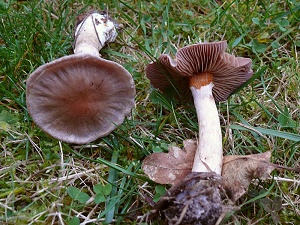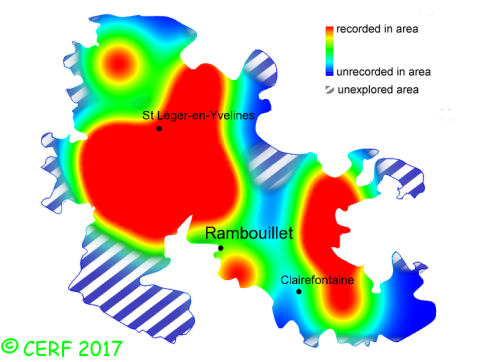| Cortinarius anomalus (Fr.:Fr.) Fr. |
|
|
|
|
|
|
The cap is grey violet to violet brownish. The cap surface is smooth, not viscid nor sticky. The stem is violet towards top, brownish yellow towards base, bulbous, without ring, with a cortina. The flesh is whitish, violaceous, unchanging; the odour is faint, pleasant or unpleasant according to authors; its texture is fibrous. The gills are lilac-violet then brownish, adnate, distant . The spore print is rusty brown. This species is mycorrhizal. It grows on the ground, in broad-leaved and coniferous woods, on a rather acid soil, with birch, beech, spruce, oak, willow. The fruiting period takes place from July to November.
Chemical tests : none. Distinctive features : Dry cap, purple-grey to purple-brown, silky to micaceous (like snail slime); Stem with scales, purplish towards top, whitish towards base; purple mycelium Cortinarius anomalus is occasional and widely present in the forest of Rambouillet, and is frequent, more generally speaking . | ||
|
page updated on 14/01/18

